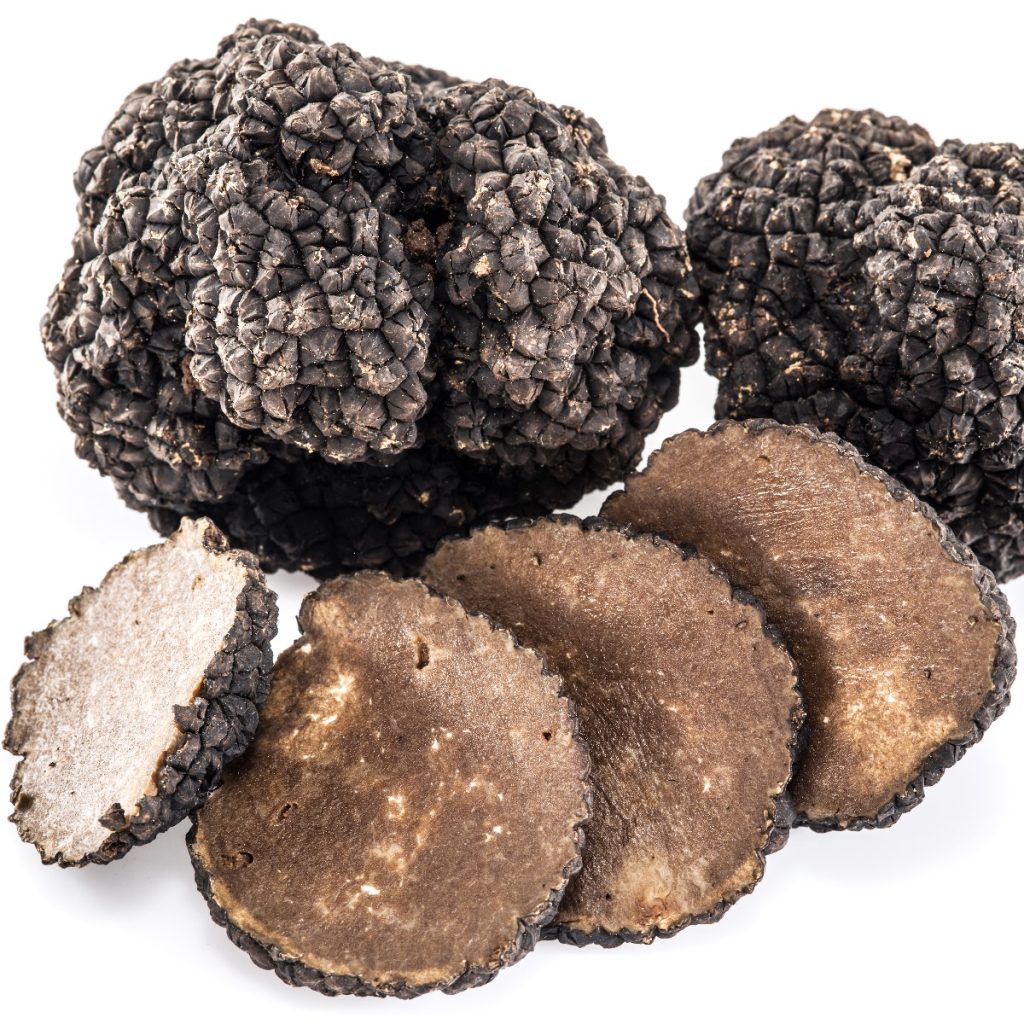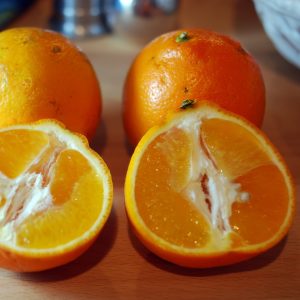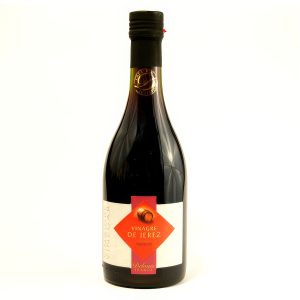Truffles Are A Pig’s Best Friend
I am a big fan of truffles, and I’m talking about the truffles pigs and dogs find in the ground that are used to add their “perfumy fragrance” and intoxicating flavor to a simple pasta dish or bowl of risotto. Unfortunately, hard to find fresh here in the United States and prohibitively expensive even if you can find them; I resort to the more modestly priced truffle oil.
I wanted to know more about truffles, how they are found, where they come from in Italy, and who can take them from the ground. Hence, I asked my friend Elenora Baldwin, who lives in Italy and has been out hunting for truffles many times, to answer some questions about this elusive tuber. I hope you find these interesting questions because Lola’s responses are terrific.
“I heart tartufi.”
I’m glad you asked me to write about truffles RG because I love to speak about the foods I love best. Truffles are in my top 5 favorite foods, along with chocolate, seafood, tomatoes, and basil.
Preposterously elusive, harvested with spy-story secrecy, imbued with an otherworldly mix of sublime and naughty fragrances, and often confused with the fine chocolate with the same name, the truffle has been prized by peasants and nobles alike for centuries.
This quote from the French writer Alexandre Dumas sums up the infatuation:
“The most learned men have been questioned as to the nature of this tuber, and after two thousand years of argument and discussion,
Their answer is the same as it was on the first day: We do not know. The truffles themselves have been interrogated and have answered, “Eat us and praise the Lord.”
Are there professional truffle hunters, or do locals find them and sell them to distributors? And how deep are truffles buried in the ground?
It’s hard to believe that one of the rarest, most expensive foods in the world is located thanks to the talent of pigs and dogs. These unusual fungi resemble knobbly tubers and have a very penetrating smell. They grow around the roots of trees, mainly oak, chestnut, poplars, limes, hazel, and beech trees, and can be found up to a meter below the ground, never beyond the range of the shady branches.
The difficult-to-find Tartufo is routed out by animals specially trained to do so for several years. Pigs have keener noses, but dogs are less inclined to gobble up the prize. Once the dog indicates a possible find, the trufolau (expert truffle harvester) uses a narrow spade with a long handle to dig up the truffle without damaging it. He then proceeds to scrape back the earth, being extra careful not to touch the truffle with his hands (which will cause the fungus to rot).
If the truffle isn’t ripe, it is carefully reburied for future harvesting. Unfortunately, this methodically slow and labor-intensive reaping method is what makes truffles so extremely expensive.

Do they grow all over Italy, or are some regions better than others? Are they readily available in those regions?
Truffles – with their heady, earthy, garlicky aroma and unusually delicate flavor – have been prized by gourmets for centuries and were credited by the ancient Greeks and Romans with both therapeutic and aphrodisiac powers. Of the almost 70 known varieties, the most desirable is the white truffle (actually pale cream or brown with white marbling) of the Alba region in Piemonte (Tuber magnatum).
The end of September heralds the arrival of the precious white truffle -Tartufo Bianco, the high point in the truffle hunters’ yea. There are several festivals to celebrate this expensive delicacy. The white truffle festival in Alb is the largest and most popular. You can check with the official Tartufo Bianco di Alba International white truffle festival website for dates for next year.
White truffle is mainly found in northern and central Italy, while the Tuber borchi, aka Whitish truffle, is found in Tuscany, Romagna, Marche, and Molise. Unfortunately, neither of these is as aromatic as those from Piemonte.
The next most popular is the black truffle, or Black Périgord Truffle (Tuber melanosporum). It is named after the Périgord region in France and grows exclusively under oak trees. In Italy, our exquisite black truffle is the Tartufo nero pregiato, also called Tartufo nero di Norcia e Spoleto. Specimens can be found in late summer, early autumn, and winter, reaching several centimeters in diameter and weighing up to 100 grams.
This delicately pungent gas-scented tartufo’s flesh is dark brown with white streaks and darker wrinkly skin, and some prefer it to the noble white from Alba. Black truffles sell between €200 and 600 per kilogram (USD $127-$383 per pound), depending on the quantity and quality of the harvest.

Why don’t they have truffle farms?
All attempts to grow truffles in artificial environments or from seed have so far failed to produce significant results; it would seem Mother Nature knows her stuff and is not prepared to give up her secrets so easily. Truffles are spontaneous and cannot be farmed. The precious nuggets prosper only in a symbiotic relationship with the roots of trees.
Truffle season lasts from September to December, with the best times coming in the middle of this period. Foragers prefer to harvest at night because the dogs are less disturbed by noises and because darkness”¦ protects the trufolau against curious eyes!
Are they as expensive in Italy as they are in the United States?
Fresh truffles should be quoted on the Stock Exchange along with gold and fuel oil. European truffles can sell for a staggering $1,000-$2,000 a pound, which is part of the reason food lovers experience the fungus so fleetingly in grated sprinkles. The record price paid for a single white truffle was set in December 2007, when Macau casino owner Stanley Ho paid US $330,000 for a specimen weighing 1.5 kilograms (3.3 lb), discovered by Mr. Luciano Savini, his son Cristiano and their dog Rocco.
One of the largest truffles found in decades was unearthed near Pisa and sold at an auction held simultaneously in Macau, Hong Kong, and Florence.
If you are in a truffle-growing area, can you go out on your property and find them, or do you have to go to a wooded area?
Those who gather truffles often have their secret spots to search for them, which usually requires permission from a private landowner. You don’t need a big forest to hunt for mushrooms and tartufi. State forests and other public lands have designated mushroom-harvesting seasons, limits on how much a person can pick, and other restrictions.
In general, rakes and other garden tools that could disturb the soil are prohibited on these lands, although small hand-made divots are OK as long as the hole is covered after digging. A dog trained to sniff out truffles is the best and most environmentally friendly way to hunt for them. Many trainers use truffle-scented cotton balls and actual truffle pieces to condition dogs to the smell.
If the truffles found have no smell, they are probably not ripe, and it may be best to refrain from picking them and to come back later. However, I’ve heard that some truffles can be ripened in a thick layer of brown paper bags stored in a cool, dry place or sealable plastic bags with paper towels.
How important are they to Italians when in season? For example, let’s say you are in Rome and don’t have access to search for truffles. Do families purchase them for cooking when in season, or are they too expensive?
Truffles are a big deal all over Italy. Is it not just the Italian foodies who drool over them? They are a national experience. Late autumn spells truffles and mushrooms, so any serious restaurateur will do anything to get their hands on a prized nugget for their menu.
Home cooks often turn to the more affordable Black variety for their family preparations and instead treat themselves to a few shaved scales of Tartufo Bianco at their favorite restaurants.
My high-end gourmet foods dealer calls me every fall season with hushed tones and whispers the T word secretly. He always saves me a small white truffle whenever a few come into his shop from Alba.
If I can afford it, I may buy one and design a feast around the little smelly thing. Otherwise, I turn to truffle-scented oil or wonderful little jars of truffle paste. But never frozen truffles, those I cannot abide by.

Truffle Tips
Fresh truffles should be used as soon as possible after purchase but can be stored for up to 3 days in the refrigerator. To take full advantage of their perfumy fragrance, bury them wrapped in a paper towel in a glass container full of uncooked rice, and cover them tightly before refrigerating.
The truffle fragrance will permeate the rice they’re stored with, giving the cook a double-flavor bonus for future risotto.
Be sure to keep the container away from dairy products that absorb fragrances.
Before shaving, gently brush any surface grit off the truffle with a very soft toothbrush under cold water. If the thought of ingesting the skin of the dark species freaks you out, you can peel it (saving the peelings for soups or vegetable broths). White truffles should not be peeled, ever!
The special truffle-slicer implement is used to shave off paper-thin slivers of tartufo to flavor cooked foods such as omelets, polenta, risottos, fondue, or delicate sauces. It can be slivered at the last minute over literally anything, from a fried egg over easy to a handful of boiled asparagus, delicately seasoned salad, or beef carpaccio.
The best way to enjoy the full pang of flavorsome tartufi is through minimalism. So I shave them thinly over a simple dish like possibly homemade pasta, dressed with only a little butter and a light dash of grated Parmigiano.
Tagliolini, angel hair, and very delicate ribbony pasta are the best choices because they require little cooking time and this, too, adds to the simplicity of the operation.
What about truffles do you find so appealing? Is it like eating a pungent, stinky cheese that can be amazing? Do you think it is an acquired taste?
Some say truffles taste like dirt and smell like a decaying swamp, goat pee, dead rat, or cheese gone bad. So what is it about truffles that are so appealing?
It’s all about a foul aroma, a nasty aroma-and some people love it. I’m one of them. The allure of the truffle is a mystery. However horribly they may stink, I love the shaved sprinkles that bless my plate.
Tomorrow I will post Lola’s Strozzapreti, Porcini, Zucca & Tartufo recipe featuring fresh truffles. For those who need to learn what Strozzapreti & Zucca are, check in tomorrow after I look them up myself.
Thanks, Eleanor, for another fantastic interview and all the great information you offered us.
















7 Responses
Wonderful! Thank you for this great opportunity.
Ciao and happy shavings… Lola
You are welcome Lola and I am excited to feature you as a Reluctant Gourmet contributor. Stay tuned everyone.
Always great to hear your wonderful knowledge on food. I also love truffles.
Philip McCobb
Brilliant answers to great questions that were enlightening as well as interesting, thank you!
Hi Sammy, thanks and you are welcome. – RG
I’m so glad to see Lola was talking about real truffles, and not so-called “truffle oil”. The New York Times had a piece a couple of years ago “Hocus-Pocus, and a Beaker of Truffles” ( http://www.nytimes.com/2007/05/16/dining/16truf.html ) that explained “truffle oil” has no truffle in it. It’s olive oil with a chemical that smells superficially similar to real truffles.
The best line was from one of the producers, who said their oil uses “something from the truffle that is not the truffle.
I’m still learning from you, but I’m trying to reach my goals. I absolutely enjoy reading everything that is written on your website. Keep the articles coming. I liked it!
Thank you Shanda – RG
I am still confused. So what you are saying is one truffle is used in cooking and another type is actually chocolate??
Useful article. But I suggest you need to update it given that all sought after truffles are being successfully farmed except for the ‘Alba’ white truffle – tuber magnatum – which people are still busy working on cracking that problem. The range of countries now growing truffles for commercial sale has also expanded.